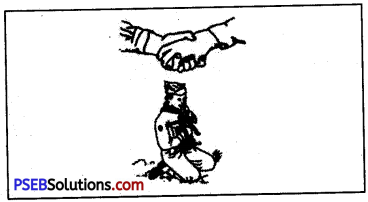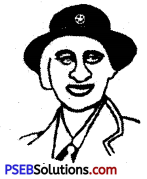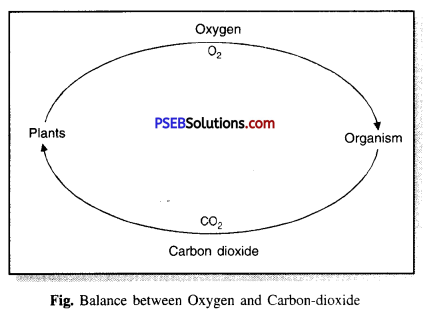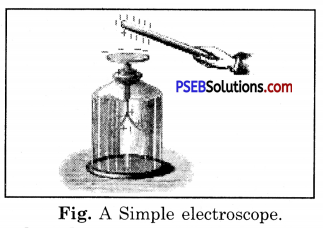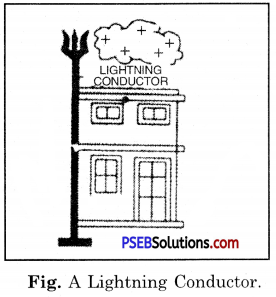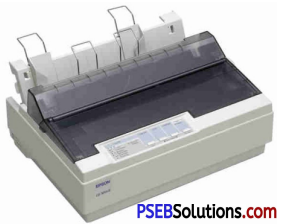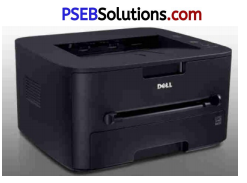Punjab State Board PSEB 9th Class Agriculture Book Solutions Chapter 8 Poultry Farming Textbook Exercise Questions and Answers.
PSEB Solutions for Class 9 Agriculture Chapter 8 Poultry Farming
Agriculture Guide for Class 9 PSEB Poultry Farming Textbook Questions and Answers
(A) Answer in 1-2 words:
Question 1.
At what age hen starts laying eggs?
Answer:
After 160 days.
Question 2.
Name two breeds of meat-type poultry.
Answer:
IBL-80 Broiler and White Plymouth Rock.
Question 3.
What is the average egg weight?
Answer:
55 gram.
![]()
Question 4.
Which hen gives white eggs?
Answer:
White Leghorn.
Question 5.
How many eggs are produced by Rhode Island Red annually?
Answer:
180 eggs.
Question 6.
Which gas is produced in poultry litter?
Answer:
Ammonia.
Question 7.
Which device is used to give heat to chicks?
Answer:
Brooder.
Question 8.
What is the height of the poultry shed?
Answer:
10 feet.
Question 9.
What is the size of the cage for two birds?
Answer:
15 inches long and 12 inches wide.
Question 10.
Whether feed consumption increases or decreases in the winter season?
Answer:
Increases.
(B) Answer in 1-2 sentences:
Question 1.
What is meant by poultry?
Answer:
The meaning of poultry is the rearing of birds (all types) to fulfill the economical needs of human beings. It includes chicken, turkey, ducks, geese, Japanese quails, emu, etc.
Question 2.
Give details of local desi breeds of layers.
Answer:
Breeds of the hen.
- Sutlej Layer: Punjab Layer-1 and Punjab Layer-2 are two types of this breed. It lays 255-265 eggs annually. The average weight of one egg is 55 grams.
- IBL-80 Broiler: It is a breed of hen which is reared for meat purposes. It weighs 1350-1450 grams at the age of 6 weeks.
![]()
Question 3.
Compare White Leghorn and Rhode Island Red hens.
Answer:
| White Leghorn Hen | Rhode Island Red Hen |
| Its egg color is white. | Its egg color is brown. |
| It lays 220-250 eggs annually. | It lays 180 eggs annually. |
| It eats less. | It eats more. |
| Its meat is not tasty. It is egg giving breed. | It is used for meat purposes. |
Question 4.
Which nutrients are required for the growth of birds?
Answer:
Birds require about 40 feed nutrients. These nutrients can be divided into 6 classes i.e. carbohydrates, proteins, fat, minerals, vitamins, and water.
Question 5.
Explain poultry shed.
Answer:
Sheds of hen must be made at a higher elevation and they should be connected with road so that the transport of eggs, feed, and poultry litter is made easy. Rainwater should not collect around the shed.
Question 6.
Explain poultry management in summer.
Answer:
Birds don’t have sweat glands in their body and they have enough feathers so they face difficulty in summers. Plant mulberry trees and grass should be around the shed. Sprinkle water on the roof of the shed as this reduces the temperature of the shed in the summer. Sidewalls shouldn’t be more than 1 to 1.5 feet high. The wire mesh net is a must on the side walls. A thick layer of straw should be spread on the roof of the shed. In extremely hot conditions sprinkle water on the hens with a spray pump. Change the water regularly and increase the number of waterers in the shed.
Question 7.
What is the importance of poultry litter management?
Answer:
Keep the litter dry always. Many diseases are caused by wet litter. Thus ammonia gas is produced which causes difficulties for birds and as well as humans.
Question 8.
Name the breeds reared for meat purposes.
Answer:
IBL-80 Broiler, Rhode Island Red, and White Plymouth Rock are the main breeds of hen which are reared for their meat.
Question 9.
Give details of the IBL-80 breed.
Answer:
This breed is reared for meat purposes. It weighs 1350:1450 grams in six weeks.
Question 10.
How poultry feed is prepared?
Answer:
It contains maize, broken rice, wheat, rice polish, groundnut cake, fish meal, limestone, and common salt, etc. Antibiotics are also added to their poultry feed.
(C) Answer in 5-6 sentences:
Question 1.
Give details of exotic poultry breeds.
Answer:
- White Leghorn: The egg of this breed is white. It lays 220-250 eggs annually. Its meat is not tasty. It is of small size and eats less feed.
- Rhode Island Red: Its egg color is red. It lays 180 eggs annually. It eats more and it is reared for its meat.
- White Plymouth Rock: It lays 140 eggs annually. Its egg color is brown and its weight is more than 60 grams. Its chick attains a bodyweight of 1 kg at the age of 2 months.
Question 2.
Explain the feed nutrients of poultry.
Answer:
For proper growth and egg production, birds need 40 types of feed nutrients. Deficiency of any nutrient may cause deterioration in health and egg production. These nutrients can be classified into six categories, carbohydrates, protein, fat, minerals, vitamins, and water.
![]()
Question 3.
What is the difference between summer and winter management of poultry?
Answer:
Summer management. Birds don’t have sweat glands in their body and they have enough feathers so they face difficulty in summers. Plant mulberry trees and grass should be around the shed. Sprinkle water on the roof of shed as this reduces the temperature of the shed m the summer. Side walls shouldn’t be more than 1 to 1.5 feet high.
Wire mesh net is must on the side walls. A thick layer of straw should be spreaded on the roof of the shed. In extreme hot conditions sprinkle water on the hens with spray pump. Change the water regularly and increase the number of waterers in the shed.
Winter Management. When temperature is below 0°C in winter it has bad effect on birds. If suitable temperature is not maintained in the shed then birds can eat 3-5 kg feed extra. Cover windows with curtains and stir the litter twice a week.
Question 4.
From where poultry training can be attained?
Answer:
Before starting a poultry farm, one should get proper training first. One can contact Deputy Director (Animal husbandary), GADVASU, Ludhiana or Krishi Vigyan Kendra of concerned district for this purpose.
Question 5.
Write a note on management of chicks.
Answer:
Chicks should be purchased from an approved and trusted hatchery. Keep young chicks in a brooder which is a device used to give warmth to the chicks. Keep the chicks in light for 24 hours for the first 6-8 weeks and give them balanced good quality feed.
Very Short Answer Type Questions:
Question 1.
How many eggs are given by Sutlej Layer in a year?
Answer:
255-265 annually.
Question 2.
What is average body weight of IBL-80 broiler at the age of 6 weeks?
Answer:
1230-1450 gram.
Question 3.
At what age hen starts laying eggs?
Answer:
At the age of 160 days:
Question 4.
What is the weight of egg given by Sutlej layer?
Answer:
Approximately 55 gram.
Question 5.
Write types of Sutlej layer.
Answer:
Punjab layer-1, Punjab layer-2
Question 6.
Give name of breeds of hen found in world?
Answer:
White Leghorn, Rhode Island Red, White Plymouth Rock.
![]()
Question 7.
How many eggs are given by White Leghorn?
Answer:
In a year about 220-250 eggs.
Question 8.
What is the colour of eggs given by Rhode island red?
Answer:
These are brown in colour.
Question 9.
How many eggs are given by white plymouth rock?
Answer:
About 140 eggs annually.
Question 10.
How many feed nutrients are required by hens?
Answer:
They need 40 feed nutrients.
Question 11.
In how many classes feed nutrients are divided which are required by hens?
Answer:
Six classes i.e. carbohydrates, proteins, fat, minerals, vitamins and water.
Question 12.
What should be the increase in protein, minerals and vitamins in feed of hen in summer?
Answer:
About 20-30%.
Question 13.
Wet litter leads to production of which gas?
Answer:
It leads to production of ammonia.
Short Answer Type Questions
Question 1.
Which of the birds are reared to fulfil the economical needs of human beings?
Answer:
Chicken, turkey, ducks, geese, emu, Japanese quails etc. are the birds which are reared to fulfil the economical needs of human beings.
Question 2.
Why do birds find it hard to beair hot season of summer?
Answer:
Birds do not have sweat glands but have enough of feathres and thus they find it hard to bear hot season of summer.
PSEB 9th Class Agriculture Guide Poultry Farming Important Questions and Answers
Multiple Choice Questions:
1. Hen start laying eggs in :
(a) 50 days
(b) 160 days
(c) 500 days
(d) 250 days.
Answer:
(b) 160 days
2. Device which is used to keep chicks warm is called :
(a) microwave oven
(b) Brooder
(c) angeethi
(d) Tava
Answer:
(b) Brooder
3. Which gas is produced from little?
(a) Oxygen
(b) Hydrogen
(c) Ammonia
(d) Helium
Answer:
(c) Ammonia
4. Colour of egg obtained from Rhode island, red is:
(a) Khaki
(b) White
(c) Black
(d) Orange
Answer:
(a) Khaki
5. Average weight of egg obtained from Sutlej layer is :
(a) 10 gram
(b) 20 gram
(c) 100 gram
(d) 55 gram
Answer:
(d) 55 gram
True/False:
1. ‘Poultry’ is a word that includes all types of birds that are reared to fulfill their economical needs.
Answer:
True
2. Sutlej Layer is a type of breed of hen that gives about 255-265 eggs annually and the weight of the egg is 55 grams. A hen starts laying egg at the age of 160 days.
Answer:
True
3. White Leghorn is an exotic breed that lay 100-200 eggs annually.
Answer:
4. Rhode Island Red gives about 180 eggs annually, egg is of brown colors.
Answer:
True
5. IBL – 80 Broiler is a breed of hen which is reared for meat purpose. At the age of 6 weeks its body weight becomes 1350-1450 gram.
Answer:
True
![]()
Fill in the Blanks:
1. Device which is used to keep chicks warm is called ……………..
Answer:
brooder
2. A Hen needs …………….. foot space.
Answer:
2 sq
3. Birds cannot sweat because they don’t have …………….. in the skin.
Answer:
sweat glands
4. White Plymouth Rock gives …………….. eggs annually and chick weight at the age of two months is 1 kg.
Answer:
140
5. Hens require about …………….. feed nutrients in their feed. Feed is divided into 6 parts i.e. carbohydrates, proteins, fat, minerals, vitamins, and water.
Answer:
40

